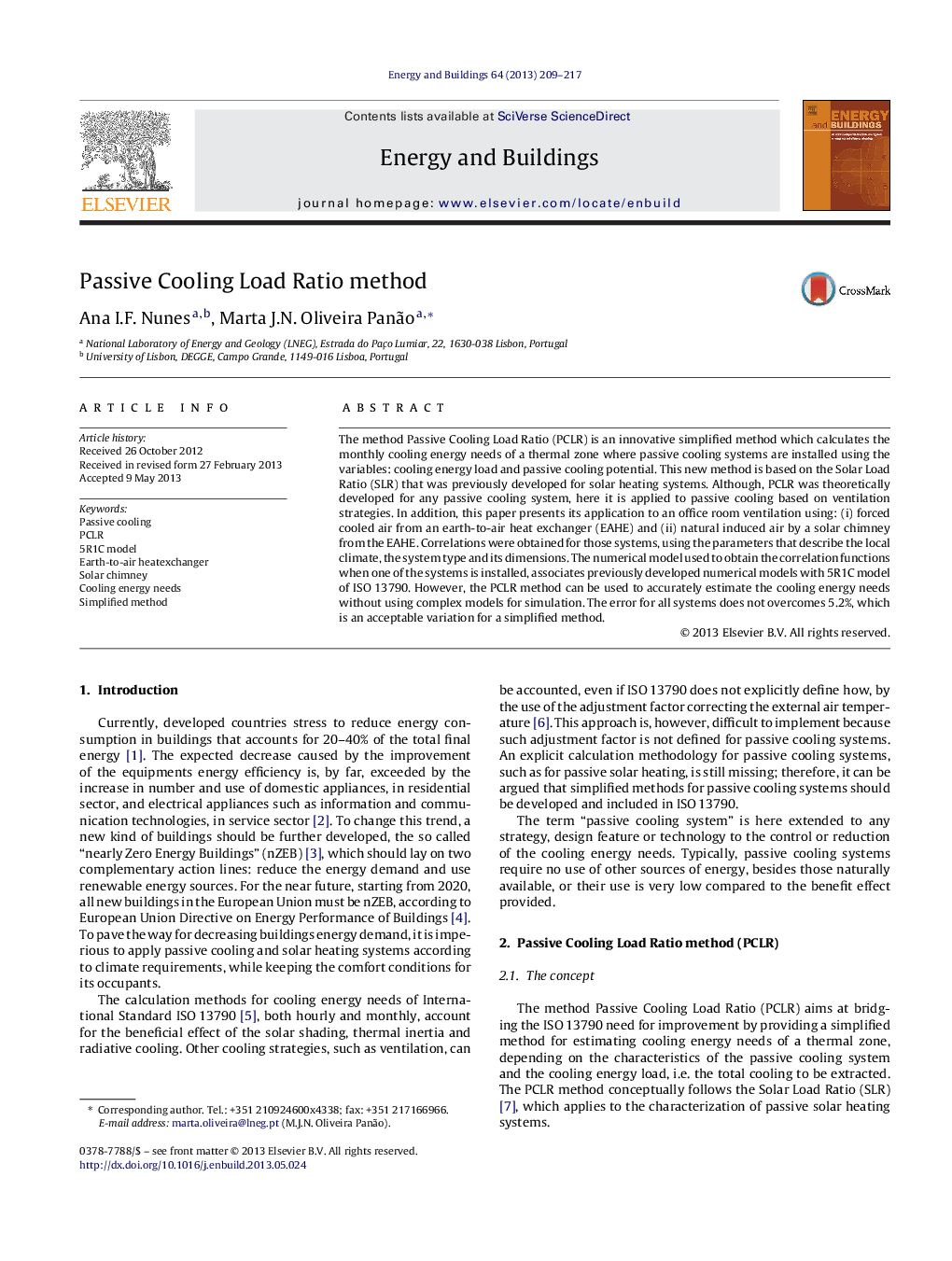| کد مقاله | کد نشریه | سال انتشار | مقاله انگلیسی | نسخه تمام متن |
|---|---|---|---|---|
| 263396 | 504074 | 2013 | 9 صفحه PDF | دانلود رایگان |

• Innovative simplified method to calculate monthly cooling energy needs.
• PCLR makes use of cooling energy load and passive cooling potential.
• Passive Cooling Fraction (PCF) correlates with a temperature corrected PCLR.
• PCLR method can accurately estimate cooling energy needs.
• The error does not overcomes 5.2% an acceptable variation for simplified methods.
The method Passive Cooling Load Ratio (PCLR) is an innovative simplified method which calculates the monthly cooling energy needs of a thermal zone where passive cooling systems are installed using the variables: cooling energy load and passive cooling potential. This new method is based on the Solar Load Ratio (SLR) that was previously developed for solar heating systems. Although, PCLR was theoretically developed for any passive cooling system, here it is applied to passive cooling based on ventilation strategies. In addition, this paper presents its application to an office room ventilation using: (i) forced cooled air from an earth-to-air heat exchanger (EAHE) and (ii) natural induced air by a solar chimney from the EAHE. Correlations were obtained for those systems, using the parameters that describe the local climate, the system type and its dimensions. The numerical model used to obtain the correlation functions when one of the systems is installed, associates previously developed numerical models with 5R1C model of ISO 13790. However, the PCLR method can be used to accurately estimate the cooling energy needs without using complex models for simulation. The error for all systems does not overcomes 5.2%, which is an acceptable variation for a simplified method.
Figure optionsDownload as PowerPoint slide
Journal: Energy and Buildings - Volume 64, September 2013, Pages 209–217